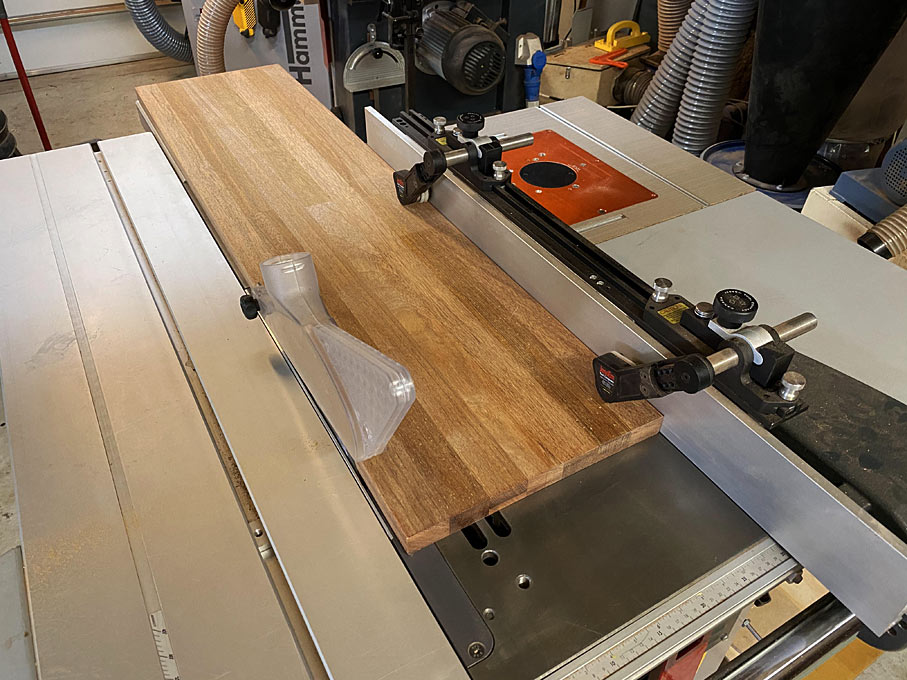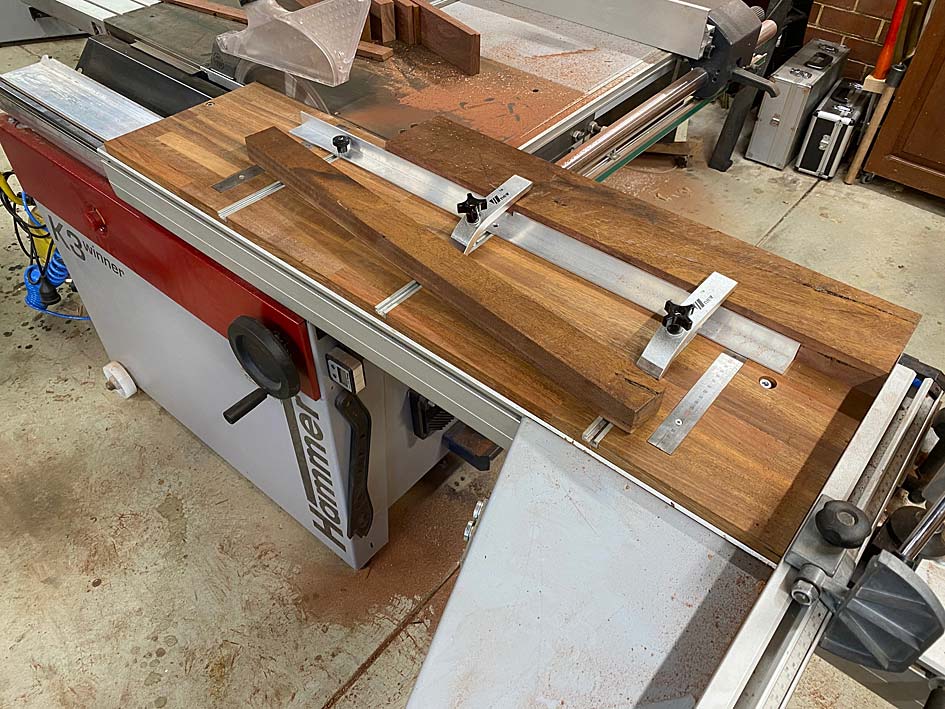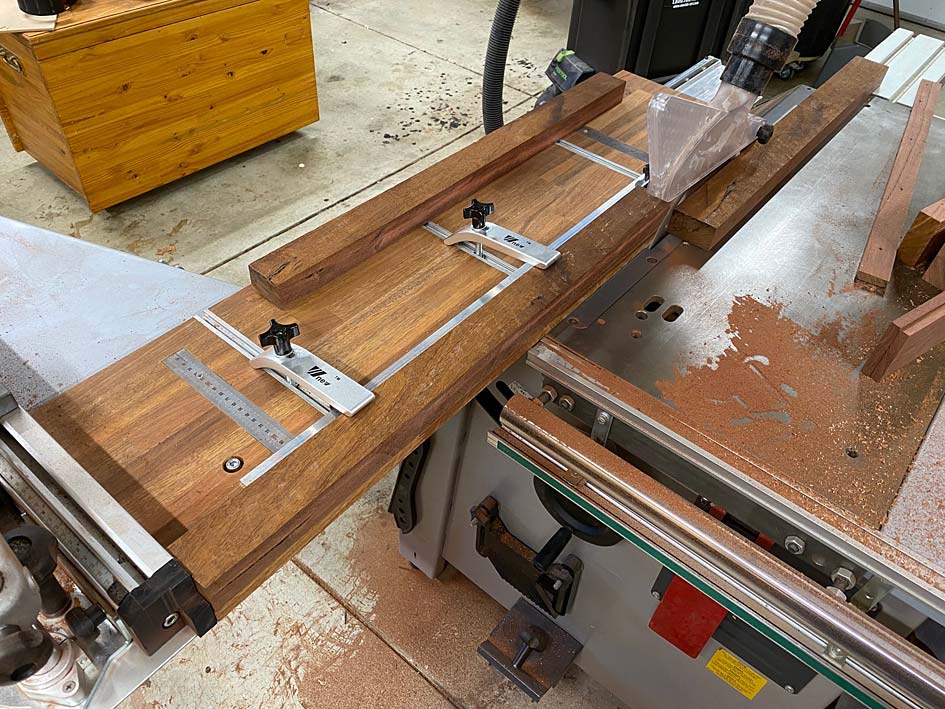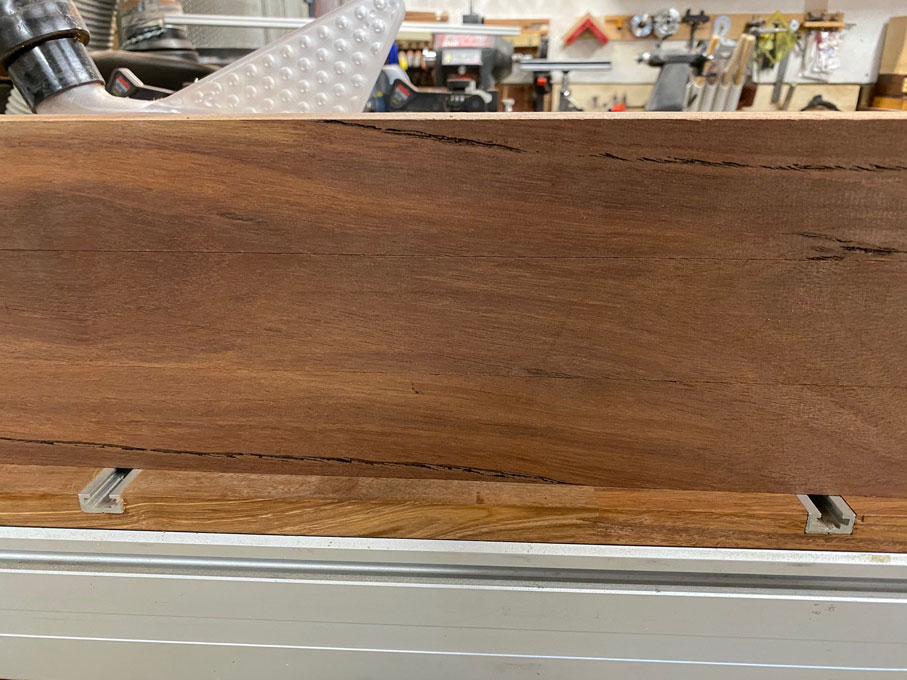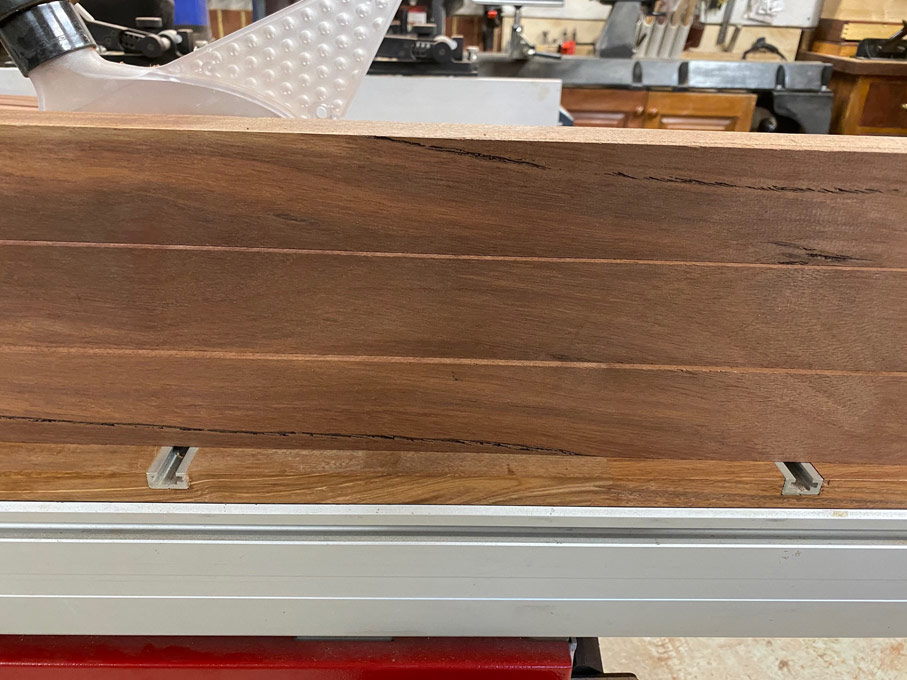I have a Wadkin AGS10 table saw and am trying to improve the accuracy and consistency of the results ... while remaining intact. I’ve upgraded the fence to the Incra TSLS and added the Jessem clear cut TS stock guide rollers and also improved my infeed and outfeed setups, and I’m seeing the benefit.
I’ve also been trying to understand the safety issues and have been reading the UK HSE info and also the very helpful guidance from Suva, the Swiss safety authority
https://www.hse.gov.uk/pubns/wis16.pdf
Using a circular saw-bench
As a private individual I am free to follow or ignore HSE rules but my view is that they’re generally there for a reason.
So for those of you who don’t know the Jessem Clear Cut TS rollers, the idea is that you fit two of them, one before and one after the blade and they push the workpiece downwards and (because they have 5 deg skew) rightwards into the fence. Just to be clear the roller that sits beyond the blade has to sit on the right side of it so it is pushing into the fence not into the blade. They don’t just add accuracy but they protect against kickback and ejection (because the rollers roll only one way).
They seem to work a treat in conjunction with the Incra fence.
But according to the HSE and Suva guides I’m doing it all wrong: the Incra fence is full length with no longitudinal adjustment, so I ought to be using an auxiliary fence that only goes as far as the cutting point on the blade. But if I did this then the Jessem rollers, or at least the one beyond the blade, would be useless, indeed dangerous. And I like the full length fence I’m using, I’ve set it up dead true to the miter tracks; if I used an auxiliary fence I’d have to be jolly sure it was true, otherwise it might be angling either the workpiece or the offcut into the blade.
So my first question is:
1) do you guys think that Jessem rollers are a sufficient safety feature that it is acceptable to use a full length fence?
Next, I want to replace the crown guard with an overhead unit; this would allow me to use a riving knife that doesn’t project above the blade (I’ve bought one of the Suva scimitar shaped ones). Overhead units like the Suva S91 seem grotesquely expensive so I’m going to build my own. It seems that the crown guard has three functions: (a) to avoid leaving the blade exposed; (b) to be a physical block to kickback; and (c) to act as a dust extraction point. The commercially available overhead extractors seem to be designed to exert downwards force on the workpiece as they glide over it, providing function (b), but I would have thought that the Jessem rollers do this job. So my second question is
2) Is it OK to build an overhead crown guard that covers the blade and provides dust extraction, but doesn’t have a massively beefy system to hold it, as long as it can be held hovering just above the workpiece?
Finally, the HSE seems to permit table saws to be used for part depth cuts for rebating and grooving as long as they are suitably guarded, eg, with a Shaw guard, ideally to the standard specified by BS EN ISO 13857:2008. Well I have no idea what that standard is. So my third and final question is
3) Do the Jessem rollers permit me to do part depth cuts, or do I need to add additional protection? What form should that protection take?
Thanks for bearing with me if you’ve read this far!
Josh
I’ve also been trying to understand the safety issues and have been reading the UK HSE info and also the very helpful guidance from Suva, the Swiss safety authority
https://www.hse.gov.uk/pubns/wis16.pdf
Using a circular saw-bench
As a private individual I am free to follow or ignore HSE rules but my view is that they’re generally there for a reason.
So for those of you who don’t know the Jessem Clear Cut TS rollers, the idea is that you fit two of them, one before and one after the blade and they push the workpiece downwards and (because they have 5 deg skew) rightwards into the fence. Just to be clear the roller that sits beyond the blade has to sit on the right side of it so it is pushing into the fence not into the blade. They don’t just add accuracy but they protect against kickback and ejection (because the rollers roll only one way).
They seem to work a treat in conjunction with the Incra fence.
But according to the HSE and Suva guides I’m doing it all wrong: the Incra fence is full length with no longitudinal adjustment, so I ought to be using an auxiliary fence that only goes as far as the cutting point on the blade. But if I did this then the Jessem rollers, or at least the one beyond the blade, would be useless, indeed dangerous. And I like the full length fence I’m using, I’ve set it up dead true to the miter tracks; if I used an auxiliary fence I’d have to be jolly sure it was true, otherwise it might be angling either the workpiece or the offcut into the blade.
So my first question is:
1) do you guys think that Jessem rollers are a sufficient safety feature that it is acceptable to use a full length fence?
Next, I want to replace the crown guard with an overhead unit; this would allow me to use a riving knife that doesn’t project above the blade (I’ve bought one of the Suva scimitar shaped ones). Overhead units like the Suva S91 seem grotesquely expensive so I’m going to build my own. It seems that the crown guard has three functions: (a) to avoid leaving the blade exposed; (b) to be a physical block to kickback; and (c) to act as a dust extraction point. The commercially available overhead extractors seem to be designed to exert downwards force on the workpiece as they glide over it, providing function (b), but I would have thought that the Jessem rollers do this job. So my second question is
2) Is it OK to build an overhead crown guard that covers the blade and provides dust extraction, but doesn’t have a massively beefy system to hold it, as long as it can be held hovering just above the workpiece?
Finally, the HSE seems to permit table saws to be used for part depth cuts for rebating and grooving as long as they are suitably guarded, eg, with a Shaw guard, ideally to the standard specified by BS EN ISO 13857:2008. Well I have no idea what that standard is. So my third and final question is
3) Do the Jessem rollers permit me to do part depth cuts, or do I need to add additional protection? What form should that protection take?
Thanks for bearing with me if you’ve read this far!
Josh


































